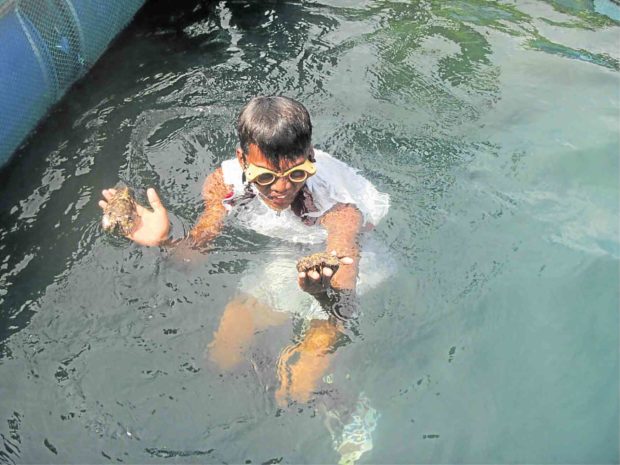
A worker helps set up a cage for lobsters in a project inaugurated by the Ilocos Sur government. —CONTRIBUTED PHOTO
SAN ESTEBAN, Ilocos Sur — Menus in Ilocos Sur restaurants featuring the province’s traditional food could soon read like this — bagnet, longganisa, empanada and lobster.
The province, famous for bagnet (deep-fried pork chunks) and longganisa (sausage), also wants to add lobster to its list of traditional food and hopes to land on the world map of lobster markets.
With the help of a private company, the provincial government began setting up cages to produce the crustaceans. A pilot cage had been placed some 500 meters from the shore at a cove off the village of Villa Quirino here.
Ilocos Sur has 18 coastal towns facing the West Philippine Sea, but it has no seafood restaurant, Gov. Ryan Singson said at the launch of the lobster culture project on Monday.
“Hopefully, the first aquaculture project in the province will benefit the community,” he said.
Low prices
Fishermen here said they occasionally catch lobsters, which were too small to command good prices. Some were sold for less than P200 a kilogram.
“If they sell shell food in the market, they get a low price and the consumers won’t be contented because what they are buying are small,” said Paul Tiongson, owner of the Northwest Aquatics which invested in the lobster culture project.
The company promised to buy juvenile lobsters (10-30 grams each) from local fishermen at P60-P80 each, depending on size.
He said lobster culture would not hurt the marine environment because the crustaceans were not given commercial feeds but natural food like trash fish, mussels and oysters that do not damage corals. Commercial feeds have been blamed for coral bleaching, Tiongson said.
The San Esteban government had strictly enforced laws against illegal fishing in its municipal waters.
Tiongson said Northwest Aquatics planned to expand into the production of other high-value species.